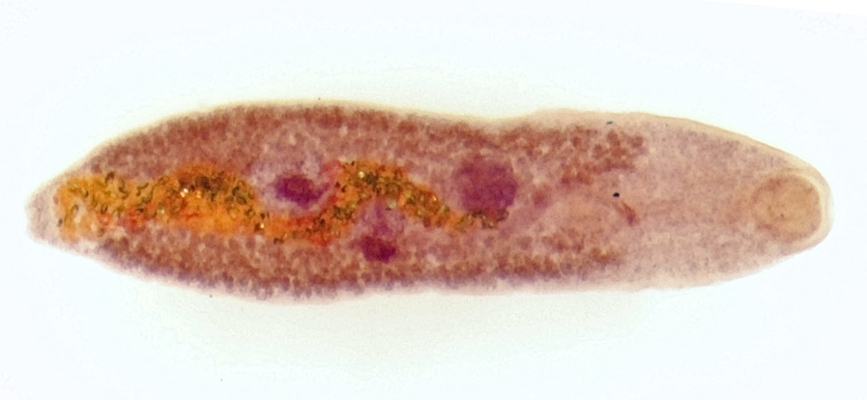Specimen Acquisition/Deposition
The MSB Division of Parasites provides permanent preservation for helminths and other parasites of animals. Specimens are acquired by gift, bequest, field collection, abandonment or other means. Titles to all specimens are obtained free and clear, without restrictions as to use, exhibition, loan, and dispersal or future disposition. Some specimens without data may be used in activities such as teaching. Please contact the Collections Manager for specimen label forms for deposition.
Acquisitions are documented by an accession form signed by the Curator, with copies to be filed with the Division and with the donor (who returns a signed copy of the accession form to ratify the donation). Implicit and explicit in the donation is the understanding that the donor transfers ownership to the MSB Division of Parasites and agrees that the item may be integrated into the existing collection and may be used in any way.
Researchers are encouraged to deposit their material early enough to receive numbers for inclusion in their manuscripts. It is mandatory that the specimens be received before numbers are assigned to them. All specimens in a type series must be labeled clearly. Designation of specimens on a slide containing others may be accomplished by drawing a line around the specimen with a diamond pencil on the lower surface of the slide. Ideally, different specimens should be mounted separately. Parasites should be marked for location in histological tissue sections with a diamond pencil or inedible marker.
Required Information for Specimen Deposition
Please download this excel form (MSB Parasites Specimen Donation form) and fill it out as complete as possible. If you do not know what to put in a cell, list that it is unknown. Below is a list of important details. Send this to the Collection’s Manager as well as include a print out with your samples. Please do not hesitate to contact Collections Manager for assistance.
- PARASITE:
- Scientific name of the parasite (sex if appropriate)
- Habitat - location in/on host
- Name of Parasite Collector (s)
- Name of Parasite identifier if different from collector
- Media in which the specimen is preserved (slides and vials)
- Collector/field number (s)
- Date of collection
- Genbank accession numbers (or Bar Code of Life, etc..)
- Geographical Locality - geopolitical name, description, including: country, state or province, city; other identifying features such as mountain(s), lake(s), river(s), etc. (will be same as host)
- Longitude/latitude coordinates (will be same as host)
- HOST:
- Latin name of the host
- Adult or juvenile
- Sex
- Any other information, weight, measurements, habitat observations etc.
- If the host has been deposited in a museum collection, that museum number must also be included
- Name of Host Collector (s)
- Name of Host Identifier if different from collector
- Date of Collection
- Geographical Locality - geopolitical name, description, including: country, state or province, city; other identifying features such as mountain(s), lake(s), river(s), etc (will be same as parasite)
- Longitude/latitude coordinates (will be same as parasite
Packaging Specimens for Mailing
Specimens must be packaged in sturdy containers and surrounded by shockproof absorbent material sufficient to withstand impact in transit and to absorb fluid should specimen vials break. Screw caps on vials should be taped/parafilmed in place to prevent loosening in transit. Individual vials should be placed in separate small plastic bags. Slides must be completely dry and individually wrapped in paper before being placed in a slide box with shock-absorbing material between them. Wooden and flexible plastic slide boxes are preferred. A letter containing the information about the specimens should be included in the package and a copy sent under separate cover, or by e-mail to the Collections Manager or FAX (+1-505-277- 1351)


